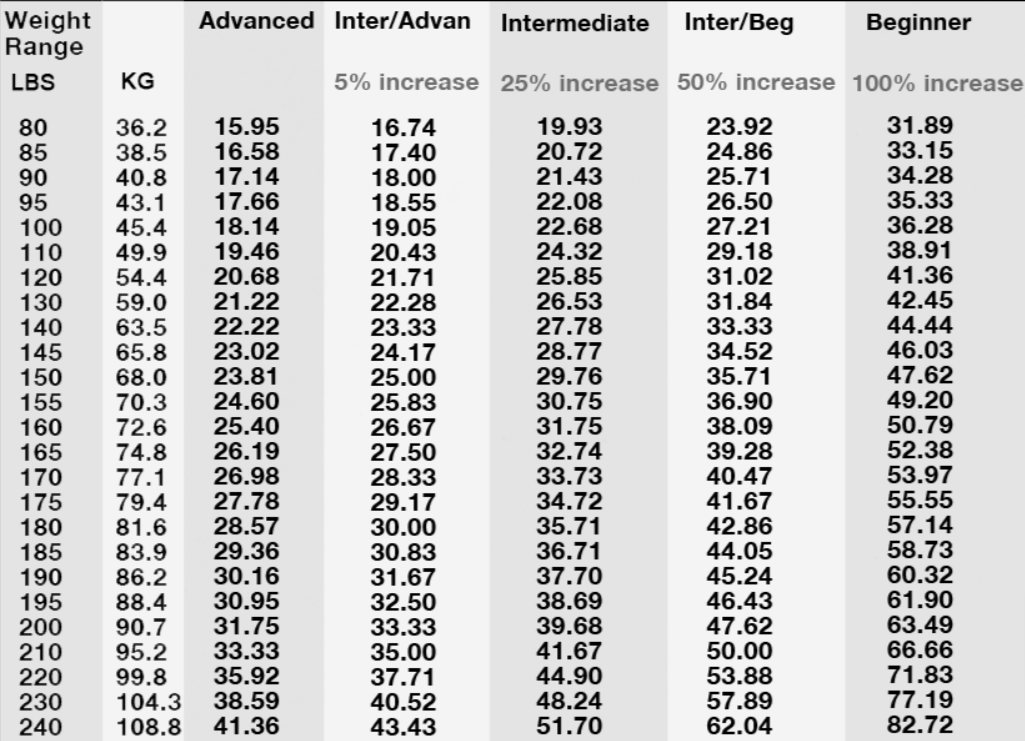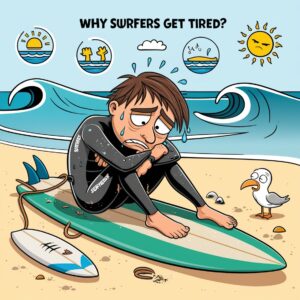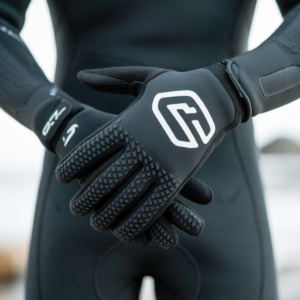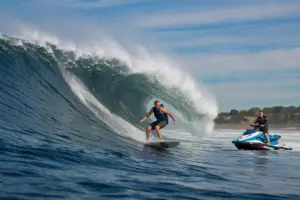if oySurfing is for everyone. Surfers come in all shapes and sizes and no matter who you are or what your size, there is a surfboard and a wave for you. But the question is: “Are there any weight limits in surfing?“
There are no official weight restrictions or weight limits in the sport of surfing. Surfboards are designed to provide float for surfers to successfully ride waves. For heavier surfers, it’s as simple as riding a bigger surfboard.
I have been lucky enough to surf in a number of different locations around the world and I have met surfers big and small.
Whether you are looking to get into the sport or find out some helpful tips, read on!
Who is the Biggest Pro Surfer?
The average height and weight of a male professional surfer on the World Surf League (WSL) Championship Tour is 5 foot 11 inches and 169 pounds.
The two largest male surfers on tour are Jordy Smith (6ft 3in, 193lbs) and Zeke Lau (6ft 2in, 202lbs).
The world’s best known professional free surfer (who doesn’t participate in contests) is Laird Hamilton from Hawaii and he is 6 foot 3 inches and weighs in at 215 pounds.
For reference, here are the height and weight of some famous surfers:
| Surfer Name | Height | Weight |
| Kelly Slater | 5’9″ (175 cm) | 160 lbs (73 kg) |
| John John Florence | 6’2″ (188 cm) | 174 lbs (79 kg) |
| Gabriel Medina | 5’11” (180 cm) | 169 lbs (77 kg) |
| Mick Fanning | 5’10” (178 cm) | 165 lbs (75 kg) |
| Jordy Smith | 6’3″ (191 cm) | 190 lbs (86 kg) |
| Italo Ferreira | 5’7″ (170 cm) | 149 lbs (68 kg) |
| Stephanie Gilmore | 5’11” (180 cm) | 145 lbs (66 kg) |
| Carissa Moore | 5’7″ (170 cm) | 140 lbs (63.5 kg) |
| Filipe Toledo | 5’9″ (175 cm) | 154 lbs (70 kg) |
| Tom Curren | 5’10” (178 cm) | 160 lbs (73 kg) |
| Layne Beachley | 5’7″ (170 cm) | 132 lbs (60 kg) |
| Tyler Wright | 5’10” (178 cm) | 159 lbs (72 kg) |
| Lisa Andersen | 5’6″ (168 cm) | 127 lbs (58 kg) |
| Andy Irons | 6’0″ (183 cm) | 170 lbs (77 kg) |
| Owen Wright | 6’3″ (191 cm) | 180 lbs (82 kg) |
| Kolohe Andino | 5’11” (180 cm) | 165 lbs (75 kg) |
| Mark Occhilupo | 5’9″ (175 cm) | 180 lbs (82 kg) |
| Alana Blanchard | 5’8″ (173 cm) | 120 lbs (54 kg) |
| Tatiana Weston-Webb | 5’5″ (165 cm) | 130 lbs (59 kg) |
| Coco Ho | 5’3″ (160 cm) | 115 lbs (52 kg) |
| Jack Robinson | 5’11” (180 cm) | 165 lbs (75 kg) |
| Kai Lenny | 5’9″ (175 cm) | 160 lbs (73 kg) |
| Sebastian Zietz | 6’0″ (183 cm) | 180 lbs (82 kg) |
| Ezekiel Lau | 6’2″ (188 cm) | 200 lbs (91 kg) |
| Conner Coffin | 5’8″ (173 cm) | 160 lbs (73 kg) |
| Sally Fitzgibbons | 5’7″ (170 cm) | 132 lbs (60 kg) |
| Lakey Peterson | 5’7″ (170 cm) | 130 lbs (59 kg) |
| Courtney Conlogue | 5’8″ (173 cm) | 140 lbs (63.5 kg) |
| Keanu Asing | 5’6″ (168 cm) | 154 lbs (70 kg) |
| Julian Wilson | 6’0″ (183 cm) | 180 lbs (82 kg) |
| Frederico Morais | 6’1″ (185 cm) | 187 lbs (85 kg) |
| Malia Manuel | 5’7″ (170 cm) | 125 lbs (57 kg) |
| Isabella Nichols | 5’9″ (175 cm) | 130 lbs (59 kg) |
| Ryan Callinan | 5’11” (180 cm) | 176 lbs (80 kg) |
| Leo Fioravanti | 6’0″ (183 cm) | 172 lbs (78 kg) |
| Adriano de Souza | 5’6″ (168 cm) | 145 lbs (66 kg) |
| Sage Erickson | 5’7″ (170 cm) | 132 lbs (60 kg) |
| Josh Kerr | 5’9″ (175 cm) | 150 lbs (68 kg) |
| Wade Carmichael | 6’0″ (183 cm) | 200 lbs (91 kg) |
| Michel Bourez | 5’9″ (175 cm) | 180 lbs (82 kg) |
What Size Surfboard Should I Get For My Weight?
The amount of weight that a surfboard can float is important because it helps surfers choose the most appropriate surfboard.
Generally, surfboard sizing is determined by the following factors:
- Weight of the surfer
- Experience/ability
- Age
If you are more experienced, you can probably get away with a smaller board and if you are heavier, it is recommended to ride a larger board because it will provide more float.
The key factors you will want to consider are volume, length and construction.
Volume
Volume is a measurement, expressed in litres, that helps explain the buoyancy of a surfboard. It is used in surfboard design to inform surfers about how much weight a surfboard will float.
For more experienced surfers, the volume may not make as much of a difference and it may come down to personal preference.
For heavier surfers (250 lbs+), a recommended surfboard size of 100 litres or more will help provide the necessary float.
If you’re interested in a more detailed volume chart, which includes weight range and skill level, see the chart below
Surfboard Size (Length x Width X Thickness)
The size of a surfboard, which includes length, width and thickness, will influence the amount of stability and paddle power. For heavier surfers, a good recommendation is to get a bigger surfboard.
Bigger surfboards aren’t just for larger framed riders, they are enjoyable for everyone. Some surfers strictly surf long boards, which are typically 9-10 feet in length, because they paddle faster and you catch more waves, which equals more fun!
Mid-length surfboards, which are typically 7-8 feet in length with varying widths and thickness, are popular because of their versatility. Most small children initially learn on a surfboard around 7 feet in length. Surfers big and small can benefit from a mid-length.
For reference, my wife and I will take turns using a 9 foot long x 24 inch wide x 3.5 inch thick, soft topped surfboard for small summer waves and it has a volume of 98 litres.
For more info about surfboard wieghts, read this: 25 Surfboard Weight Examples
Surfboard Construction
Construction refers to the type of material surfboards are made from. The outside of the surfboard is typically made from polyester, epoxy and foam. Most surfboards have a foam middle, which reduces weight and provides float.
“Foam is your friend”
This is a common saying that refers to the fact that more foam in your surfboard provides more float, which makes paddling, catching waves and surfing easier.
In the past number of years there has been an increase in the number of companies making surfboards with a foam outer.
Also called soft topped surfboards, foam on the outside is very user friendly for every surfer from beginners to advanced. It is more forgiving and safer because there is less likelihood the surfer will get hurt if they get hit by the board.
How Does Surfer Weight Affect Performance?
When you go to the beach, you will meet people from every walk of life.
You will also notice many different sizes of surfers, from small children to large adults, successfully surfing waves. The weight of a surfer doesn’t necessarily affect performance at all.
Balance, coordination and fitness are more important than size when it comes to catching waves and performing well in the ocean.
Tricks
Tricks are performed by advanced surfers when riding waves. Certain tricks, like airs, are performed when a surfer generates speed and launches themselves (and their surfboard) into the air, lands and continues riding. Airs are easier for smaller/lighter surfers.
Other tricks, like cutbacks and turns, can be performed by surfers big and small. Sometimes, cutbacks and turns are performed with more power if the surfer has some weight behind them.
Wave Size
Generally, it is easier for larger framed surfers to excel in bigger waves because there is more energy from the ocean to push you along. In larger waves, it helps to have a sturdier frame and to be solid on your board.
In smaller surfing conditions, lighter surfers have an advantage. It is easier for lighter surfers to excel in small waves because they don’t need much energy from the wave to push them along. Lighter surfers can hop along the wave without bogging down.
That being said, all surfers can have fun in all wave conditions with the right equipment.
Examples of Bigger Surfers Ripping!
There are many surfers with bigger frames that don’t allow their size to impact performance.
Shawn Briley is a standout surfer from the North Shore of Hawaii. See the Video below of an impossible ride from the 1990’s.
Jimbo Pellegrine is a well known surfer, that lived and worked in Bali, Indonesia. The Video below shows some serious surfing in barreling conditions.
Tips for Heavier Surfers
Ride a Big Surfboard
This tip can actually be a recommendation for every surfer on the planet. But first, I’ll let you in on a little secret. Most of the surf industry marketing is focused on trying to sell surfboards that professional surfers ride. But those surfboards are made for the best surfers in the world.
This leads to a lot of surfers buying surfboards that are inappropriate and really difficult to surf.
Don’t fall for that trick. Buy a surfboard that makes it easy to paddle and catch waves. Buy a surfboard with more float than you think you need.
Surfing is supposed to be fun. A really simple formula to remember: more waves = more fun.
Don’t Get Discouraged
Surfing can be discouraging for everyone.
In smaller conditions, it can sometimes be annoying when you have a larger frame because it is harder to catch waves and maintain your speed. Lighter surfers seem to effortlessly catch smaller waves without much problem.
I have often become frustrated myself because I find those conditions difficult as well.
Also, don’t forget that as the waves get a little bigger a little extra weight can be an advantage.
Be like the Bumble Bee
Quick story about bumblebees:
Bumblebees are a flying contradiction. They have a body that doesn’t look like it was designed for flying – big and round with small wings.
A scientist in the 1930’s even tried to explain that flight was physically impossible for bumblebees. I guess they forgot to tell the bees!
Bumblebees have a large frame but they are amazing flyers.
It’s the same thing in surfing. There are no limitations.
If you enjoed this articles, you may find these ones interesting:
Is Surfing Exhausting? 10 Reasons Surfers Get Tired
Does Skateboarding Help Surfing? 10 Reasons Why
How To Get in Shape & Lose Weight While Surfing





